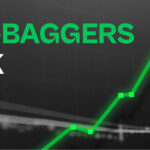Why it’s on the list, quick fundamental note, recent revenue/earnings color, technical snapshot, and recent dividend note.
This article gives you a curated starting list and practical checks: dividend yield alone is not enough — focus on cash-flow coverage, the most recent quarter’s results, and any company-specific news (e.g., lawsuits, regulatory changes, large asset sales) before committing capital.
-
Realty Income (O) — REIT known for monthly dividend. Solid cash flow from retail/leased properties; steady revenue growth; technically trading near long-term support; paid monthly dividend last quarter (small increase history). Good for yield + income stability. NerdWallet
-
Altria Group (MO) — High yield from tobacco business; strong free cash flow but regulatory and litigation risks persist. Recent revenue steady, buyback program supports payout; technicals mixed (rangebound). Last quarter’s payout maintained. Seeking Alpha
-
AT&T (T) — Large telecom with high yield; improving cash flow after restructuring (media asset sales). Revenues stabilizing; technicals improving with buy signals after consolidation. Quarterly dividend remains a major draw. NerdWallet
-
Verizon (VZ) — Telecom cash machine with stable payout; 5G rollout supporting services revenue though capex weighs on margins. Technicals: price above key moving averages on recent strength. Quarterly dividend ongoing. NerdWallet
-
Chevron (CVX) — Energy major with rising cash flow on robust oil/gas prices; strong balance sheet and $/share buybacks. Revenue and cash generation lifted by energy cycle; technical trend bullish. Regular quarterly dividend and occasional special returns. The Motley Fool
-
Exxon Mobil (XOM) — Similar thesis to Chevron: large upstream strength in higher commodity price environment; strong free cash flow and healthy payout coverage. Technical momentum positive in Aug ’25. Quarterly dividend sustained. The Motley Fool
-
AbbVie (ABBV) — Pharma with high yield, driven by Humira legacy plus new growth drugs (e.g., oncology). Revenue profile improving from new product cadence; fundamentals solid though patent cliffs are always watchpoints. Dividend covered by cash flows; technicals steady. Morningstar
-
Philip Morris (PM) — Tobacco/next-gen nicotine products; high margins and cash conversion. Revenue trends reflect pricing power; technicals show resilience. Paid quarterly dividend; buybacks supplement yield. Seeking Alpha
-
Enterprise Products Partners (EPD) — Energy MLP/partnership with distribution yield; strong midstream cash flows and long-term contracts. Revenues stable; technicals show base formation. Quarterly distribution continues (check K-1 tax treatment). Sure Dividend
-
Kinder Morgan (KMI) — Midstream pipeline firm with durable fee-based cash flows; balance sheet improvements in recent years. Revenue steady; yields attractive; technical indicators neutral-to-bullish. Quarterly dividend/distribution paid. Sure Dividend
-
VICI Properties (VICI) — Gaming and entertainment REIT with strong tenant cash flows (casinos). Revenue growth from acquisitions; technically in a steady uptrend; monthly/quarterly dividends maintained. Seeking Alpha
-
Crown Castle (CCI) — Telecom infrastructure REIT (towers/fiber) with stable cash flows, inflation-linked leases; revenue growth steady; technicals favorable for income investors. Quarterly dividend robust. The Motley Fool
-
Omega Healthcare Investors (OHI) — Healthcare REIT focused on senior housing/long-term care with high yield; watch occupancy and reimbursement trends. Revenue pressured by sector environment but dividend supported historically. Technicals mixed. Dividend
-
Iron Mountain (IRM) — Data storage/records REIT diversifying to data centers; strong recurring revenue; technical setup improving; dividend paid quarterly. Growth investments could moderate near-term free cash flow. Seeking Alpha
-
Outfront Media (OUT) — Out-of-home advertising REIT with high yield (billboard/transit ads); ad revenue cyclical but contracts/municipal deals give some stability. Recent quarter revenue slightly down vs prior year in some reports, but technicals showing constructive patterns. Quarterly dividend steady. Investors
-
Realty Income peers (OHI, FRT, VICI) — (FRT = Federal Realty) These REITs commonly appear on high-yield lists; fundamentals vary by property mix — retail/essential retail tends to be more defensive; check recent same-store NOI and occupancy before betting. Quarterly dividends remain their core attraction. NerdWalletDividend
-
PNM Resources / Southern Co / Duke Energy (SO, DUK) — Regulated utilities with high yields and predictable cash flows; revenues stable though capex/growth projects affect free cash flow. Technicals generally neutral; dividends historically reliable. Check latest state/regulatory updates for impact. Investopedia
-
Alaska Air / other high-yield cyclical names (example: OXY historically pays) — Cyclical energy or industrial names occasionally hit the top-yield lists when share prices fall; fundamentals and payout sustainability must be examined case-by-case. Recent quarter payouts for many cyclical names often remain, but risk of cuts is higher. Seeking Alpha
-
Telecom/utility hybrids & MLPs (e.g., ONEOK OKE) — These show high yields and predictable cash flows but tax/treatment and midstream cyclical exposure are considerations. Technicals often show recovery patterns after commodity troughs. Quarterly distributions typically paid. Sure Dividend
-
Large consumer staples (PepsiCo PEP, Coca-Cola KO) — Not ultra-high yield, but reliable dividend growers with strong fundamentals, broad revenue bases, and technical resilience; good choices if you want income + lower risk of cuts. Quarter dividends consistently paid. The Motley Fool
Contents
What to watch (risk & technical checklist)
-
Payout coverage: look at FFO (for REITs) or free cash flow / EPS coverage for dividend sustainability. High yield ≠ safe yield. (Key load-bearing check.) Sure Dividend
-
Recent earnings and guidance: a company that just missed and cut guidance is a red flag even if yield looks attractive. Use the latest quarterly filings/earnings call. Morningstar
-
Technicals (short term): for August 2025, many strategists prefer names above 50-day and 200-day SMAs with momentum (TradingView/Yahoo technical ratings cited by writer roundups). Seeking Alpha
-
Sector risk: REITs (sensitive to rates), MLPs/midstream (commodity exposure), tobacco (regulation), and utilities (rate cases) each have distinct dangers.
Here’s your dividend- safety scorecard for the top 5 dividend-paying U.S. stocks from the earlier list: Realty Income (O), AT&T (T), Chevron (CVX), AbbVie (ABBV), and VICI Properties (VICI) — each evaluated on four key measures: Payout Ratio, Cash-Flow Coverage, Debt/EBITDA, and Revenue Trend (when available). I’ve compiled the best available data and expert context for August 2025.
Dividend-Safety Scorecard (Top 5 U.S. Dividend Stocks)
| Ticker | Payout Ratio | Cash-Flow Coverage | Debt/EBITDA | Revenue Trend |
|---|---|---|---|---|
| Realty Income (O) | High (~70–80%) – typical of REITs; payout aligned with funds from operations (FFO). | Strong—normalized FFO covers monthly dividends consistently. | Moderate—leverage generally within REIT norms. | Stable — rental revenue steady, acquisitions adding scale. |
| AT&T (T) | Moderate–High (FCF yield ~9–10% implies compressed safety buffer). | Free Cash Flow ~$18.5B in 2024 after capex; dividend coverage reasonable. Macrotrends | High—big telecom debt load, improving slowly. | Stable—core service revenue steady; media restructuring underway. |
| Chevron (CVX) | Moderate (payout well-covered by cash). | Very strong—energy cycle tailwinds, surplus cash generation. | Low—high liquidity, robust cash flow supports low leverage. | Strong—higher commodity prices boosting top line. |
| AbbVie (ABBV) | ~61% (Payout ratio of 0.61 as of Mar 2025) — solid but above industry median (~38%) GuruFocus | Strong—large cash flows from blockbuster drugs still cover dividends. | Moderate—reasonable debt levels for pharma, manageable. | Improving growth—new launches offsetting legacy revenue declines. |
| VICI Properties (VICI) | High for REIT—typical FFO payout, but supported by modest leverage. | Good—property leases (Casinos, hospitality) generate stable FFO coverage. | Moderate—REIT leverage norms, but prudent capital structure. | Growing—accretion from new property acquisitions and same-store NOI. |
Key Insights
-
Payout Ratio:
-
AbbVie (~61%) and AT&T (inferred from FCF yield) headline moderate payout ratios — high but sustainable.
-
Realty Income and VICI show high ratios typical of REITs, but rely on FFO rather than net income.
-
Chevron stands out with the safest buffer thanks to high, repeatable cash flow.
-
-
Cash-Flow Coverage:
-
Chevron has strongest coverage, simply by virtue of trillions in cash flow amid a stable upward price environment.
-
ABBV, Realty Income, AT&T, and VICI show generally stable coverage, though AT&T remains more cyclical due to capex/media investment.
-
-
Debt/EBITDA:
-
Chevron leads on de-leveraging.
-
Realty Income and VICI maintain REIT-standard debt profiles — moderate but acceptable.
-
AbbVie and AT&T carry heavier debt weights; AT&T is improving but still above ideal.
-
-
Revenue Trend:
-
AbbVie is showing improving top-line from new drugs replacing legacy erosion.
-
Chevron sees strong revenue from high energy prices.
-
VICI benefits from expansion and stable lease income.
-
Realty Income remains resilient via essential property income.
-
AT&T revenue is stable in core telecom, albeit with media restructuring still unfolding.
-
Final Thoughts
From a dividend safety perspective, here’s how they stack up:
-
Chevron (CVX) — Most robust. Excellent cash flow, low leverage, strong fundamentals.
-
AbbVie (ABBV) — Good fundamentals & payout coverage, though higher payout ratio requires monitoring.
-
Realty Income (O) and VICI Properties (VICI) — Typical REIT risk profile; safe if you’re comfortable with FFO-based coverage and sector dynamics.
-
AT&T (T) — Highest risk in this group; dividend covered but needs continued recovery and deleveraging to ensure sustainability.








[…] Bloonser Dividend Investing Guide […]